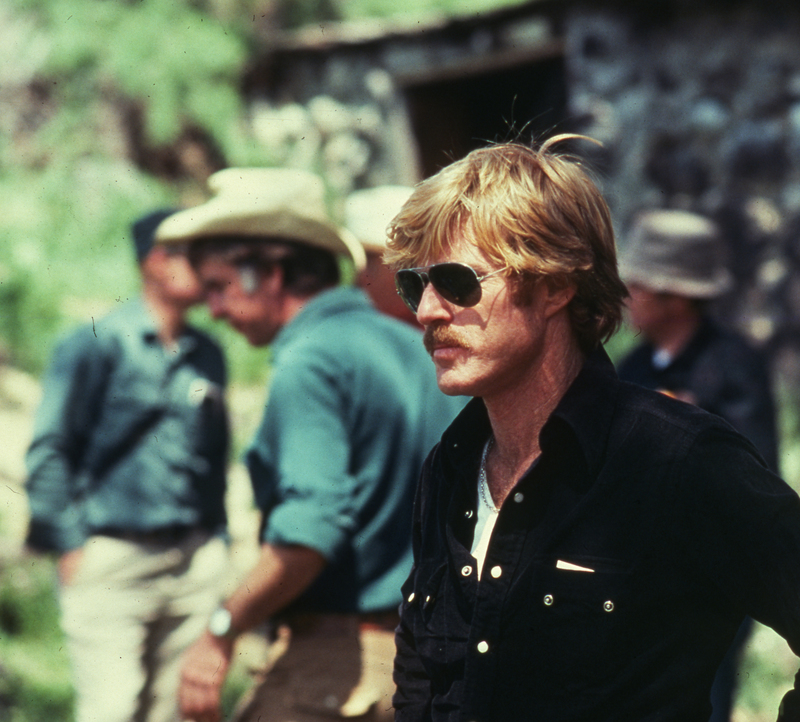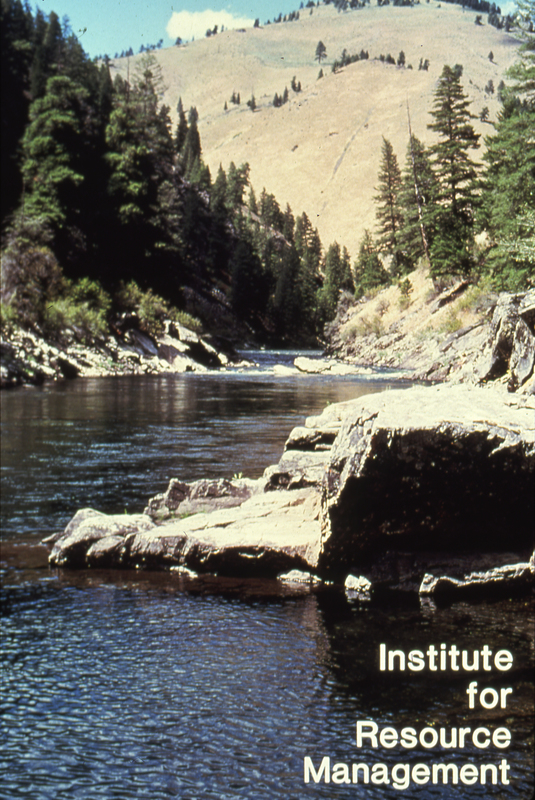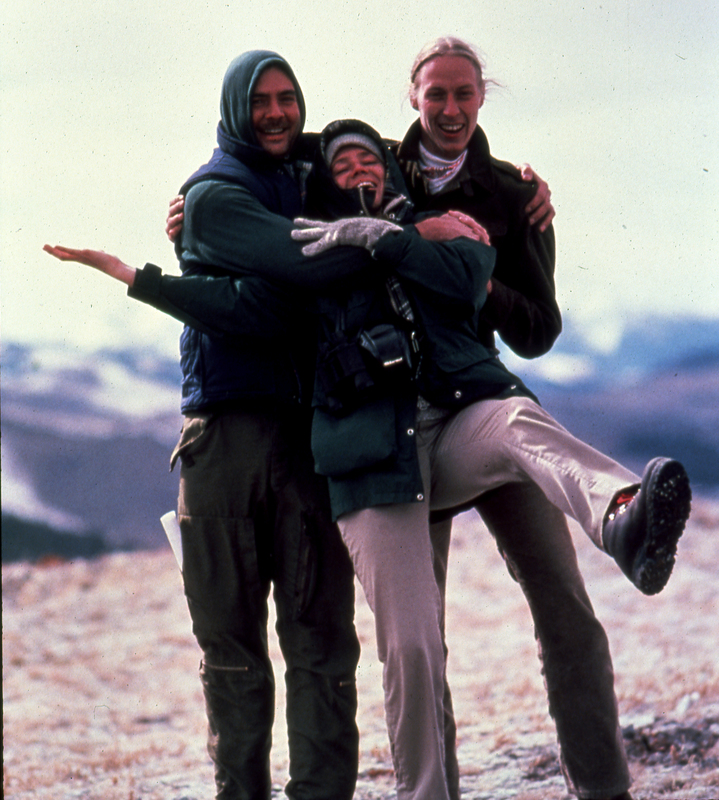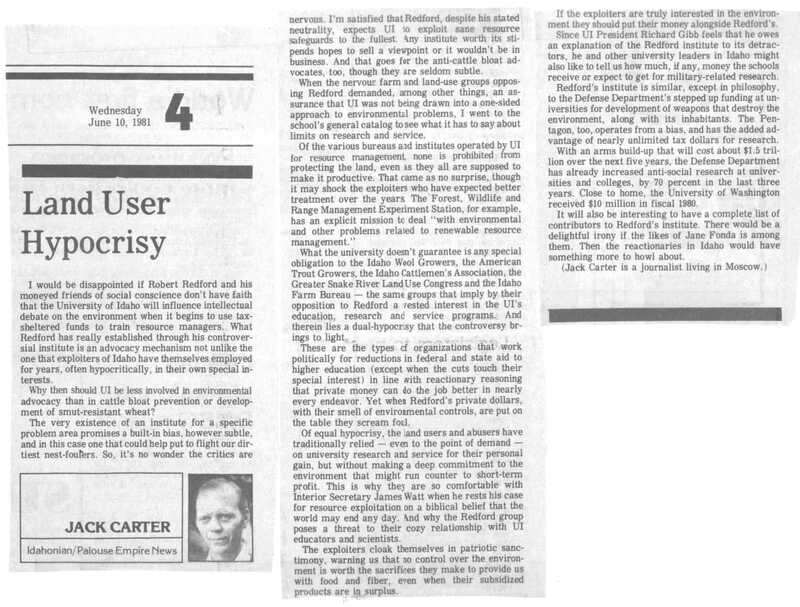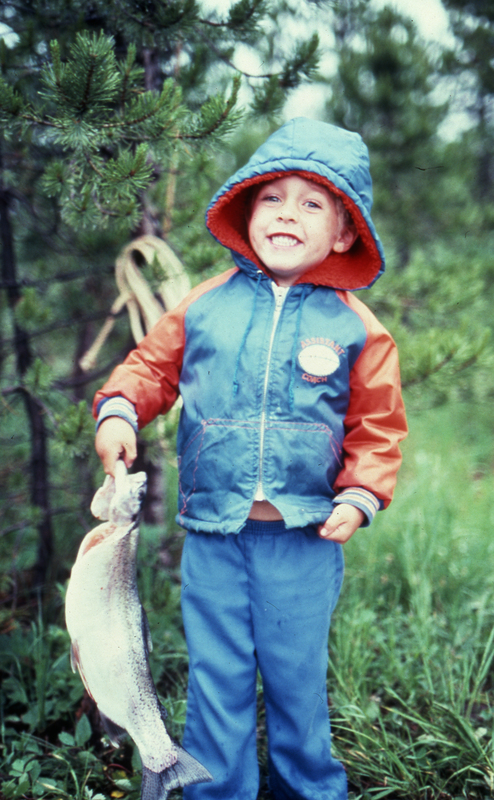In the early 1980s, the University of Idaho (UI) and Washington State University (WSU) were invited to participate in a new environmental education program by none-other than Robert Redford. A renowned actor and director, he was also an advocate for the environment. For questioning plans to build a power plant near his Utah home, he was branded a “radical environmentalist.” Redford, however, was undeterred from his efforts to advocate for the environment.
Redford appeared in a 1981 press conference in Pullman, Washington to announce the creation of a new degree program receiving startup funding from the actor. Outlining the program, he explained that it was a necessity “to meet the needs of a growing nation.” The Institute of Resource Management (IRM) would instruct students in a balanced approach to industry and stewardship of our natural resources (Hilltopics, 1981).
The multidisciplinary graduate program was to be funded through an endowment. It was managed by a new non-profit company also named the Institute for Resource Management. Its investment income would finance the graduate program (Articles of Incorporation).
The Institute of Resource Management selected UI and WSU because they were only eight miles apart, had a longstanding collaborative relationships, and their proximity to diverse natural resources and industry (Hilltopics, 1981). The Institute’s graduates would restore balance between development and environmental protection.
When the news broke about the Institute, there were protests in the local papers. Due to Redford’s “radical” reputation, some suspected ulterior motives, including that he would shutter natural resource industries.
In response, the university created an advisory board for the Institute. The board included representatives from environmental and industry groups.
Writing for the Lewiston Morning Tribune, Kristen Moulton reported:
The IRM advisory group “comes in the wake of a minor controversy over the role of the Institute. Representatives of six Idaho organizations, including livestock and industry lobbying groups, sent a letter to [U of I President] Gibb and the Board of Regents earlier this month questioning whether the Institute would thrust the university into a role of environmental advocacy….At least one of those who signed the letter, Helen Chenoweth of the Consulting Associates, a Boise lobbying firm, has been openly critical of the Institute and Redford’s connection to it (1981).” (This was about a decade before Chenoweth was elected to Congress as an Idaho Representative).
Along with the creation of an advisory board, Redford wrote an opinion piece that ran in the Coal Industry News and other journals and newspapers. Redford wrote in part: “I was afraid that we had reached a point where we were no longer going to be inheriting the world from our fathers, but, instead, borrowing it from our children (1982).”
The students would attend the two colleges and their already established environmental programs. They would take outside courses and lectures on the effects of culture, economics, law, politics, ecology, land issues, and ethics on the environment. And there would be discussion with their peers, who came from different backgrounds with a variety of viewpoints. It would not be just a textbook course, the graduate students would be out in the field, meeting and talking to people involved in natural resources and the related businesses (Resource). The first lecturer was anthropologist Richard Leakey. He spoke to the students out at the Marmes Rockshelter near Lyons Ferry State Park, WA (Leakey, 1982).
Raising money to operate IRM took longer than expected. After waiting a year to open, the endowment had yet to meet its $5 million goal. Deciding that a realized program would bring in the needed funds, the stakeholders decided to launch the Institute without further delay.
The Institute for Resource Management began teaching in the fall of 1982 with 19 Fellows.
By the spring of 1983, there was a new CEO at the non-profit who wanted the Institute to be more than a grad program. There would be fellowship/ internships with placements across the country. Short 10-day courses would be offered as well as mediation for people involved in development. And most importantly, the program would be broadened to help alleviate the on-going funding crisis (Stewart, 1983).
Come fall, the first class was getting ready to graduate but no new students were onboarded. The Institute paused recruitment uncertain of its fate and whether new monies could be found. During this hiatus, people weren’t sure it would continue after 1984 (Bradshaw, 1983).
People rallied to keep The Institute for Resource Management going. An Argonaut editorial argued that IRM deserved a fighting chance having only been offered a short time. IRM student Witt Anderson, on leave from the Army Corps of Engineers in Walla Walla, said “[The Institute has] enhanced my capabilities as a resource planner and enhanced my career opportunities (Neiwert, 1983).”
President Gibb told the Idahonian that he never thought the Institute for Resource Management would be forever. “This is not terribly different from applying for a grant from the National Science Foundation. It is very, very common when you embark on one of these things that you do it for a time and go to something else.”
With the continued funding challenges, it proved impossible to maintain the IRM and it wrapped up not long after.
References
“Anthropologist Richard Leakey told an audience at Washington State…,” UPI Archives: Oct. 21, 1983.
Bradshaw, Bill. “Redford IRM to be revamped if revived,” Argonaut: Sept. 13, 1983.
Harriman, Peter. “Gibb sorry to lose Redford Institute,” Idahonian: Oct. 4, 1983.
Hinz, Sue. “Institute for Resource Management: New Cooperative Program Supported by $5 Million Endowment,” Hilltopics: March 1981.
Koskela, Alice. “In search of balance,” Lewiston Morning Tribune: Oct. 21, 1982.
“Leakey, Redford focus on students,” Idahonian: Oct. 19, 1982.
Moulton, Kristen. “Gibb assures industrial groups of voice in resource institute.” Lewiston Morning Tribune: Jun. 17, 1981.
Neiwert, David. “IRM deserves a fighting chance,” Argonaut: Oct. 7, 1983
Redford, Robert. “Why I Worked to Help Create the Resource Management Institute,” Coal Industry News: Jan. 11, 1982.
“Resource,” newsclipping, undated.
Stewart, Mike. “Redford’s IRM to shift gears,” Argonaut: Mar. 25, 1983.
UG 110 Institute for Resource Management records. University of Idaho Library Special Collections and Archives.


